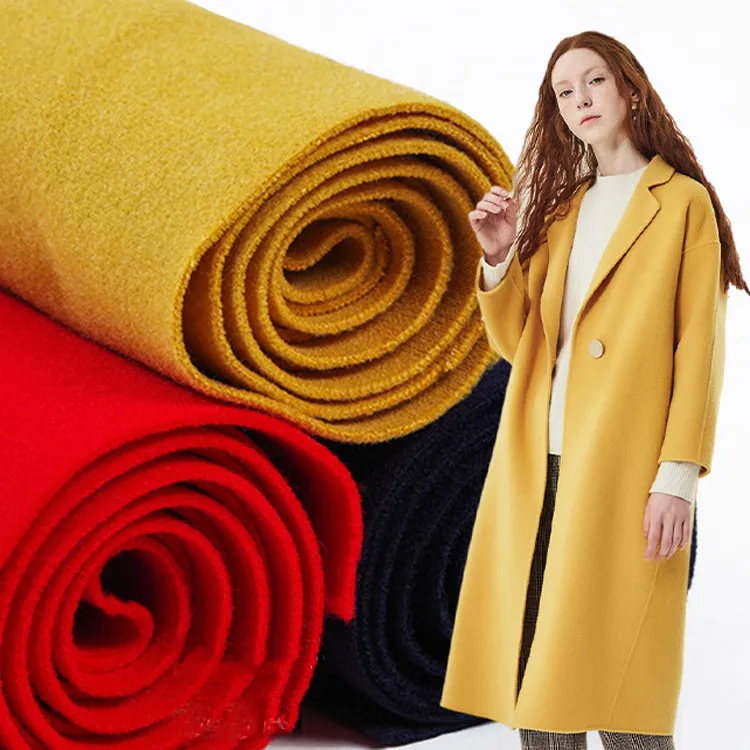What are some fun facts about woolen fabric?
2024-11-06
Wool is one of the most ancient and versatile materials used in textiles, prized for its warmth, durability, and natural properties. Woolen fabric, in particular, has been a staple in clothing, especially in colder climates, for centuries. However, wool has a lot of fascinating qualities and uses beyond just keeping you warm. Let’s dive into some fun and surprising facts about woolen fabric!
1. Wool is Naturally Flame Retardant
Wool is one of the few natural fibers that is inherently flame-resistant. It can resist burning and will not catch fire easily, which makes woolen fabric especially useful in safety clothing, fire-resistant garments, and even in some types of upholstery. The unique structure of wool fibers, which contain nitrogen and water, helps them to self-extinguish when exposed to flames.
2. Wool Keeps You Warm Even When Wet
Wool has excellent insulating properties, even when it’s wet. Unlike many synthetic fabrics, wool retains its insulating abilities even if it becomes soaked with water. This is because wool fibers have a natural ability to absorb moisture without feeling damp or cold to the touch, which makes wool an excellent choice for outdoor activities in chilly, wet conditions.
3. Wool is a Renewable Resource
Wool is a renewable and sustainable resource because sheep grow new wool every year. Unlike synthetic fabrics made from petroleum-based products, wool is biodegradable and can be recycled. In fact, wool can be reused and repurposed into new products without losing its quality, which is why it's considered an eco-friendly option for sustainable fashion.
4. Wool is Naturally Odor-Resistant
Wool is known for its odor-resistant properties. The natural structure of wool fibers helps to trap moisture and sweat, and their moisture-wicking ability keeps the skin dry. This, combined with the natural oils in wool, prevents the growth of odor-causing bacteria. That’s why woolen clothing is often preferred by athletes and outdoor enthusiasts—it helps them stay fresh even during prolonged use.

5. Wool Can Be Extremely Soft
Not all wool is itchy! While some wool fabrics have a coarser texture, merino wool, in particular, is known for its softness and is often used in high-end clothing, including fine knitwear and undergarments. Merino wool is much finer than regular wool, with fibers that can be as soft as cashmere, making it comfortable against the skin.
6. Wool is Highly Durable
Wool fibers are incredibly durable and resilient. They can stretch up to 30% of their length without breaking and return to their original shape. This makes woolen fabric long-lasting and resistant to wear and tear. Wool garments, like woolen coats and suits, can last for many years with proper care.
7. Wool Has Natural UV Protection
Wool provides natural UV protection, acting as a shield against harmful sun rays. The natural fibers in wool have the ability to absorb ultraviolet radiation, blocking up to 30% of harmful UV rays. This makes wool an excellent fabric choice for outdoor clothing in addition to its thermal and moisture-wicking properties.
8. Wool Can Be Made Into a Variety of Textures and Fabrics
Wool is incredibly versatile, and it can be transformed into different types of fabrics and textures. Flannel, tweed, cashmere, merino, and fleece are all made from various types of wool and spun in different ways. For example, merino wool is finely spun to create soft, lightweight fabrics, while tweed and flannel are coarser, heavier, and ideal for winter wear.
9. Wool Has Been Used for Thousands of Years
Wool is one of the oldest textiles used by humans. It dates back at least 10,000 years, with evidence of early wool weaving found in ancient Mesopotamian cultures. The domestication of sheep for wool production revolutionized clothing and textile industries long before the rise of synthetic fibers.
10. Wool Can Absorb Dyes Beautifully
Wool is known for its rich color retention. Its natural ability to absorb dyes results in vibrant, long-lasting colors. Many traditional fabrics like tartan plaids and kilts are woven from dyed wool. Wool also holds dye more effectively than synthetic fibers, which means that colors tend to stay more vivid and don't fade easily with time.
11. Wool is a Natural Insulator
Wool fibers are made up of keratin, a protein that has a unique ability to trap air. The structure of wool fibers creates tiny pockets of air, which act as natural insulation. This property keeps you warm in cold weather and cool in hot weather by regulating body temperature. It’s like nature’s version of a thermal regulator!
12. Wool is Self-Cleaning
Wool has a natural self-cleaning ability due to its structure and the lanolin (a natural oil) that it contains. The lanolin helps repel dirt and stains. For this reason, woolen garments often require less frequent washing compared to synthetic fabrics. Simply airing out woolen clothes can keep them fresh for longer periods, making them more low-maintenance than you might think.
13. Wool Can Be Used for Non-Clothing Items
Wool isn’t just for clothing! It can also be used in a wide variety of non-textile applications. For example, wool insulation is an eco-friendly alternative to fiberglass, used in homes and buildings to regulate temperature. Wool is also used in upholstery, carpets, and even in soundproofing materials due to its ability to absorb sound.
14. Woolen Fabric Was Once a Symbol of Wealth
In medieval Europe, fine woolen fabrics like broadcloth were often worn by the wealthy and aristocratic classes. Wool production was highly regulated, and the most luxurious and finest wool fabrics were reserved for the elite. The value of high-quality wool fabrics is reflected in the historical significance and symbolism of wool in fashion.
15. Wool is Naturally Biodegradable
Wool is a biodegradable material that decomposes in the soil without leaving harmful residues. When wool eventually reaches the end of its life cycle, it returns to nature, enriching the soil as it breaks down. This is another reason wool is considered an environmentally friendly option in comparison to synthetic fibers.
Conclusion
Woolen fabric is truly a remarkable material with a wide range of benefits. From its warmth and durability to its sustainability and versatility, wool continues to be a key player in the world of textiles, both for clothing and non-clothing purposes. Whether you're wrapping yourself in a cozy wool sweater or insulating your home with woolen materials, this natural fiber has proven to stand the test of time and remains one of the most valued materials in the textile industry.


